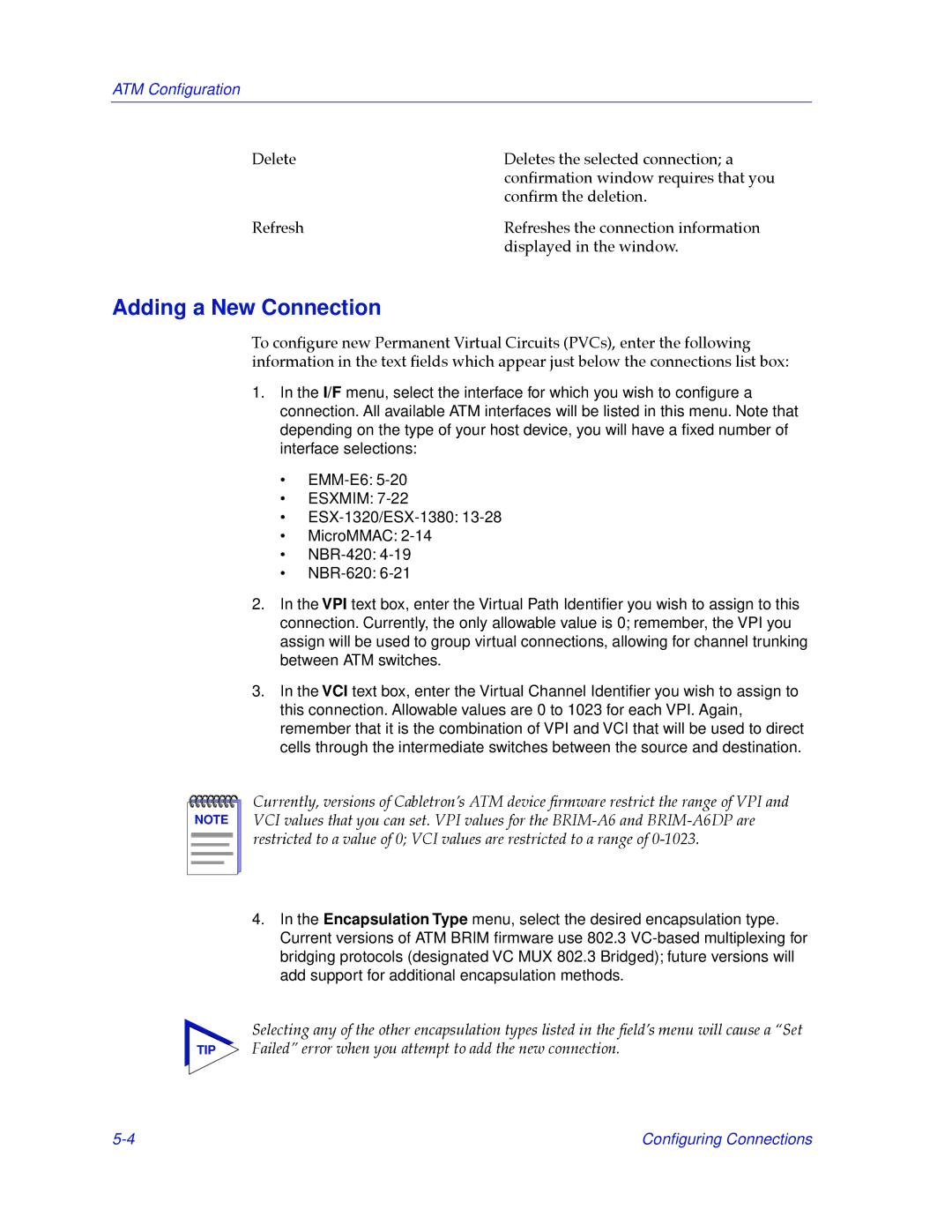
ATM Configuration
Delete | Deletes the selected connection; a |
| conÞrmation window requires that you |
| conÞrm the deletion. |
Refresh | Refreshes the connection information |
| displayed in the window. |
Adding a New Connection
To conÞgure new Permanent Virtual Circuits (PVCs), enter the following information in the text Þelds which appear just below the connections list box:
1.In the I/F menu, select the interface for which you wish to configure a connection. All available ATM interfaces will be listed in this menu. Note that depending on the type of your host device, you will have a fixed number of interface selections:
•
•ESXMIM:
•
•MicroMMAC:
•
•
2.In the VPI text box, enter the Virtual Path Identifier you wish to assign to this connection. Currently, the only allowable value is 0; remember, the VPI you assign will be used to group virtual connections, allowing for channel trunking between ATM switches.
3.In the VCI text box, enter the Virtual Channel Identifier you wish to assign to this connection. Allowable values are 0 to 1023 for each VPI. Again, remember that it is the combination of VPI and VCI that will be used to direct cells through the intermediate switches between the source and destination.
NOTE |
Currently, versions of CabletronÕs ATM device Þrmware restrict the range of VPI and VCI values that you can set. VPI values for the
4.In the Encapsulation Type menu, select the desired encapsulation type. Current versions of ATM BRIM firmware use 802.3
Selecting any of the other encapsulation types listed in the ÞeldÕs menu will cause a ÒSet
TIP FailedÓ error when you attempt to add the new connection.
Configuring Connections |
